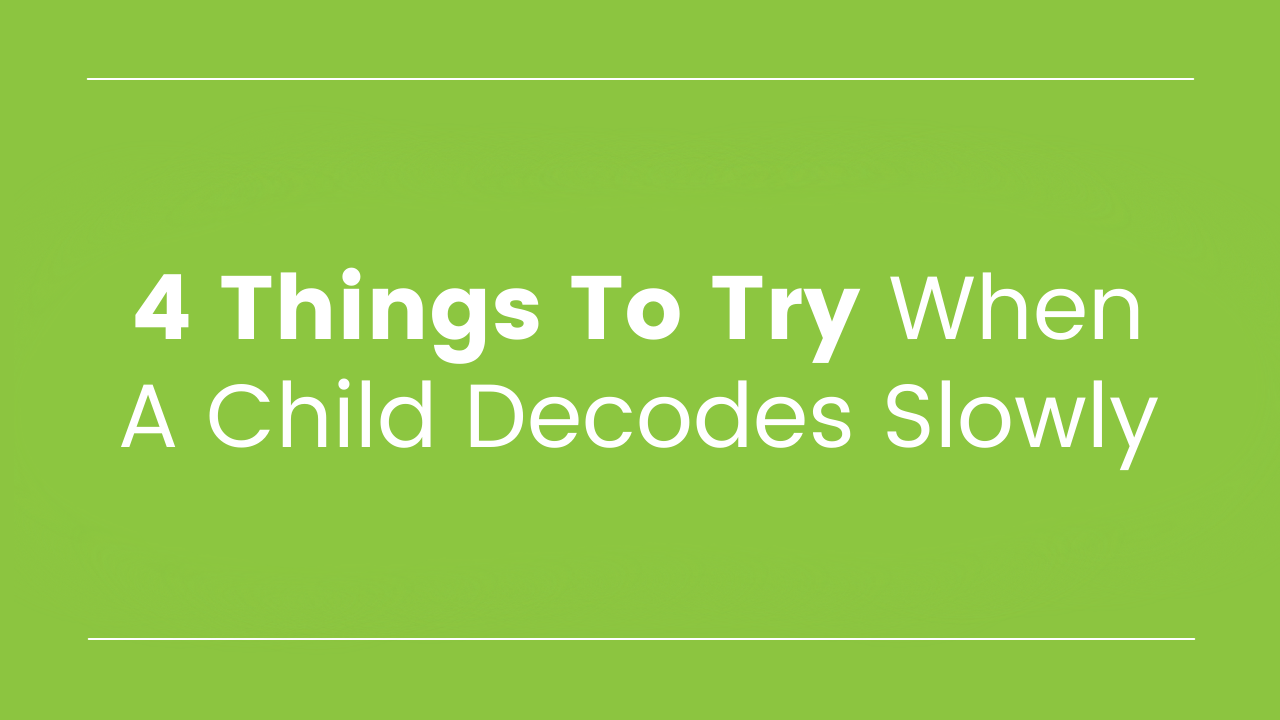
4 Things To Try When A Child Decodes Slowly
All children (and adults, for that matter) read at different paces. So does it matter if a child decodes slowly?
The answer is YES! When a child decodes slowly, it usually indicates that most of their working memory is devoted to just figuring out the words in a text. Therefore, less of their attention can be devoted to understanding the text.
It's not just that their reading sounds choppy! Slow decoding negatively impacts comprehension. And understanding the text is the whole point of reading.
When a child decodes slowly, here are 4 strategies to try!
Strategy #1: Work on fluency with letter sounds and spelling patterns.
If it takes a child quite a bit of time to read a word, we need to ask ourselves, "How long is it taking them to recall the individual sounds in the word?" If a reader is not able to quickly recognize - for example - the letter m and produce the sound /m/, that's going to slow down their decoding. And this is not just limited to letter sounds - it also applies to more challenging patterns like vowel teams.
Try having a child read lines or lists of individual letter sounds and any other patterns they've been learning. For example, they might read this line to practice digraphs:
sh ch th wh
They "read" it by saying the sound for each letter combination.
Of course, reading whole words is important! But a child needs to be able to quickly produce individual sounds, too.
Strategy #2: Allow more time for rereading word lists, sentences, and texts.
Rereading is a powerful tool for speeding up decoding and building fluency! Beginning readers should never read a text just once. They need multiple opportunities to "get good" at reading something!
If you need ways to make rereading more fun, you can try:
- Having students read to a stuffed animal, pet, or friend.
- Having students record their reading the first time, then practice a few times and record again. They can listen back to hear the difference and how they've improved!
- Reader's Theatre! Rehearsing lines for a little "show" is a fun way to get kids practicing reading the same text repeatedly.
Strategy #3: Try a "Sound By Sound, Chunk By Chunk, Word By Word" approach when rereading word lists.
Let's say you have a child read the following word list to practice l-blends: glad, slip, plum, clap, flop.
The first time, have them read each word like this: /g//l//a//d/, glad. /s//l//i//p/, slip. etc.
The second time, have them read the same list like this: gl-ad, glad. sl-ip, slip. Here, they are "chunking" the word into the onset (the letters before the vowel) and the rime (the vowel and other following consonants).
The last time they read the list, have them read each whole word: glad, slip, etc.
Strategy #4: Use paired reading with a more proficient reading partner.
Paired reading is an instructional strategy that has been shown by research to improve fluency! When a child decodes slowly, try this approach:
1. Have them read a (short) text on their own, once or twice.
2. Have them chorally read the same text with a more proficient reader (teacher, volunteer, parent, peer, etc.).
What else does a child need in order to decode more quickly?
There are many factors that play into decoding ability and speed! A comprehensive phonological awareness, phonics, and high frequency word program like From Sounds to Spelling gives K-2 readers all the tools they need to become successful decoders (and spellers).
To learn more about From Sounds to Spelling and the components of effective phonics instruction, you can watch a free webinar at this link.




